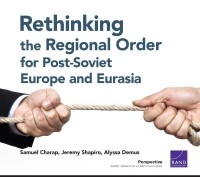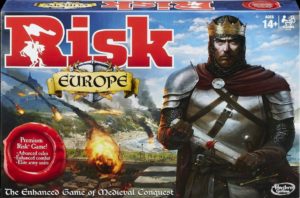 To this day, many in the West see regional order through the lens of the democratic transitions in East Central Europe (ECE), say the authors of a new RAND paper on European geopolitics. To a significant extent, NATO and EU enlargement were linked to the relative success of those transitions, they add.
To this day, many in the West see regional order through the lens of the democratic transitions in East Central Europe (ECE), say the authors of a new RAND paper on European geopolitics. To a significant extent, NATO and EU enlargement were linked to the relative success of those transitions, they add.
Now, the West’s democracies should adopt a new approach to “in-between” countries, such as Ukraine, which are sandwiched between unattainable Euro-Atlantic aspirations, and Russian security interests, they contend.
But the study has the same flaws as the board-game Risk, notes CEPA’s Edward Lucas:
 For a start, it assumes moral equivalence between all parties. There is no difference between the red team and the blue team. That is fine in a board game. But in real life that assumption puts Russia, the successor and in large part unrepentant defender of the mass-murdering Soviet Union, on the same level the European Union, which is the world’s largest and most prosperous democratic entity, and NATO, a uniquely successful military alliance of democracies.
For a start, it assumes moral equivalence between all parties. There is no difference between the red team and the blue team. That is fine in a board game. But in real life that assumption puts Russia, the successor and in large part unrepentant defender of the mass-murdering Soviet Union, on the same level the European Union, which is the world’s largest and most prosperous democratic entity, and NATO, a uniquely successful military alliance of democracies.- Secondly, it largely ignores the wishes of people in the countries directly concerned. Ukrainians died carrying blood-soaked European flags on the streets of Kyiv in 2014, because they wanted the same dignity, liberty, security, and justice that their fellow-Europeans enjoy. Too bad. The word “Maidan,” which epitomizes that glorious idealistic insurrection, appears only once, in a timeline which dismisses Ukraine’s foreign policy as a “chaotic and unsustainable” attempt to balance the West and Russia.
This leaves no room for Ukrainians’ own views of, and struggle against, their corrupt, oligarchic, and often treasonous political rulers, Lucas observes. RTWT







